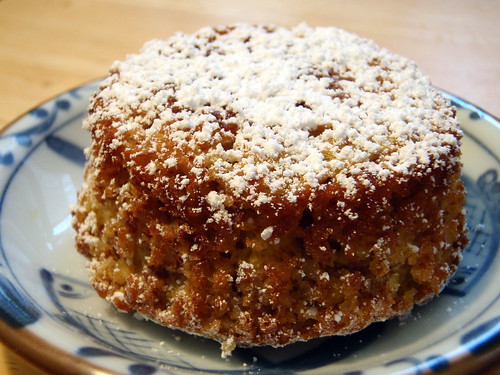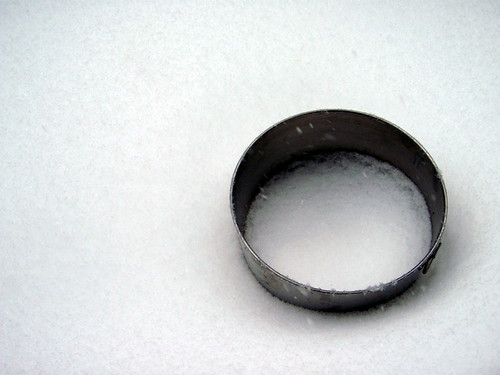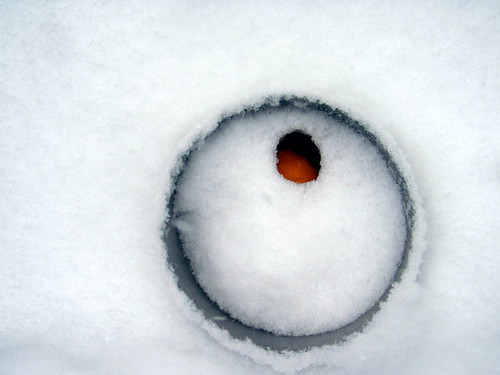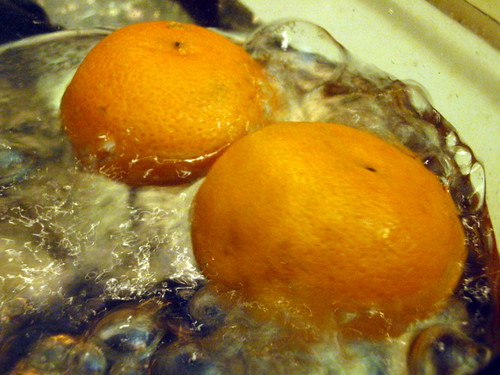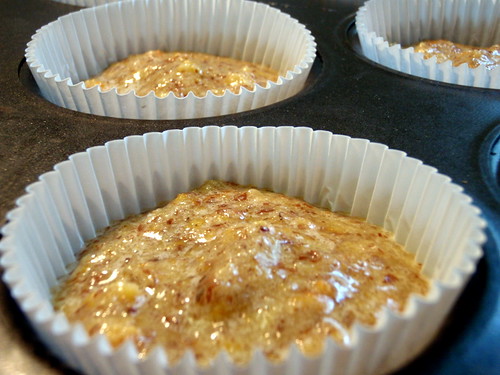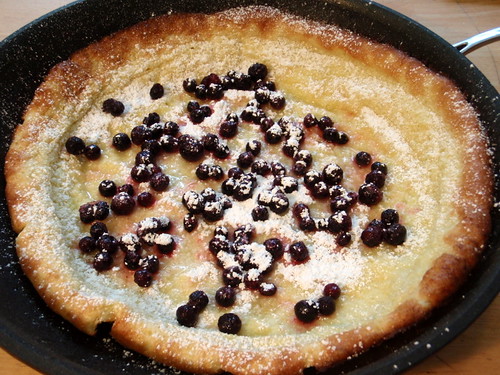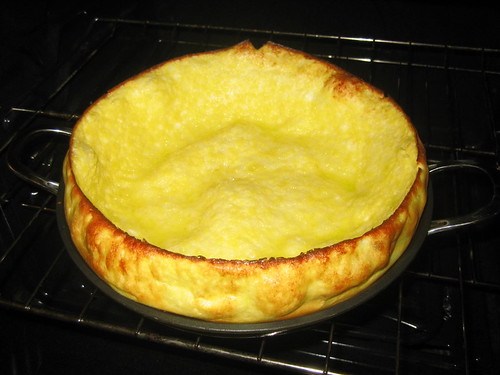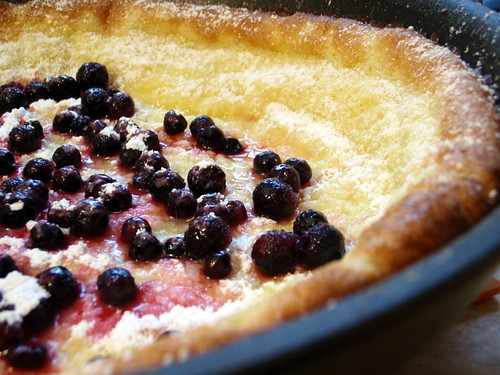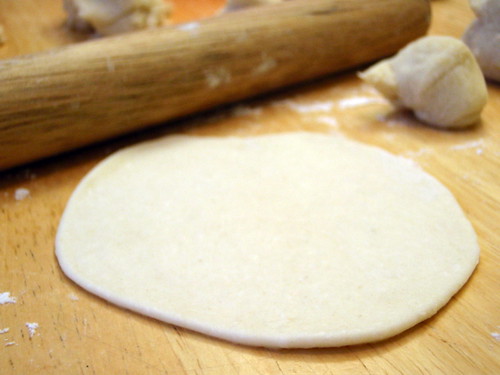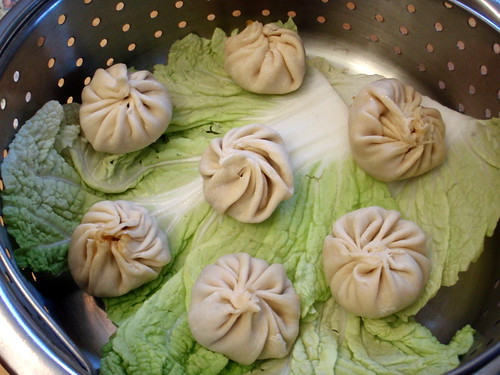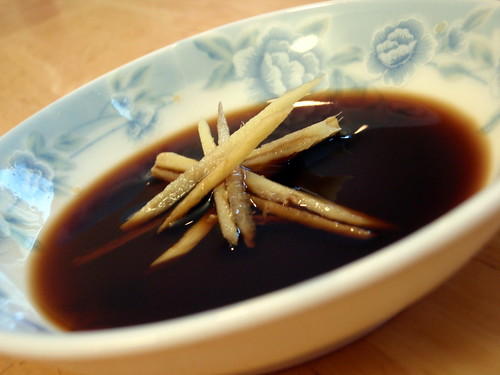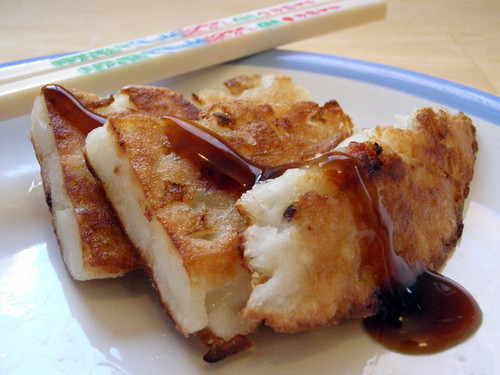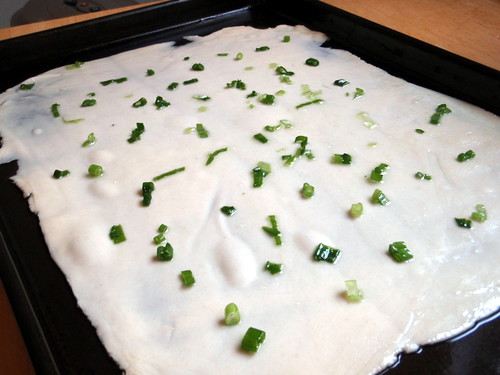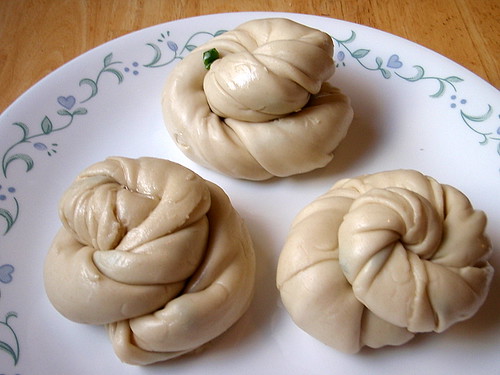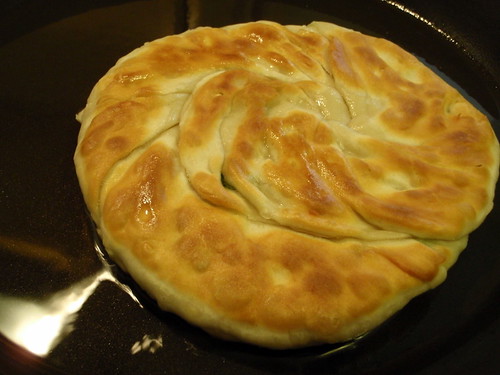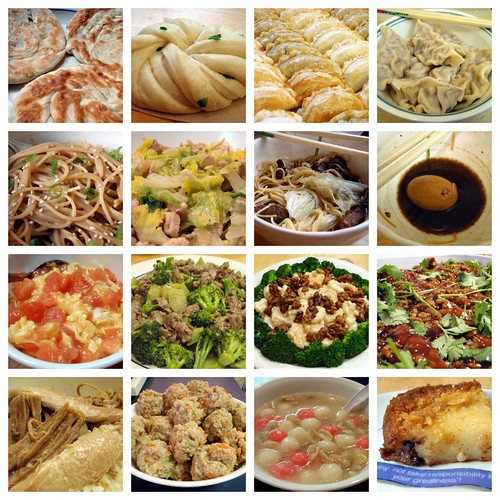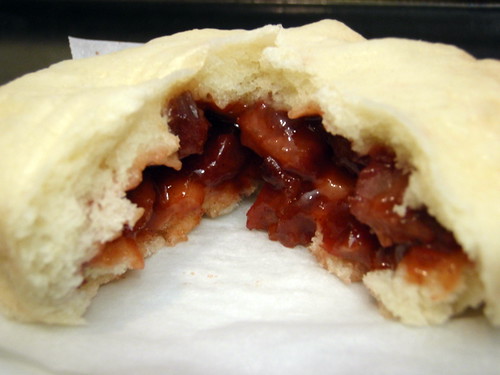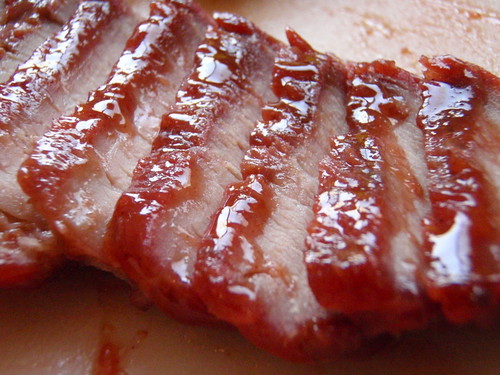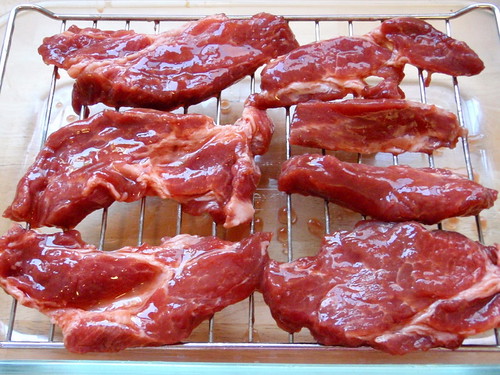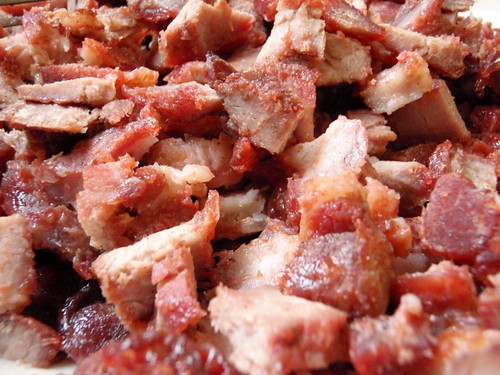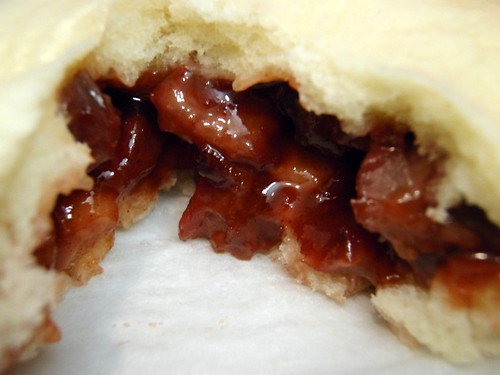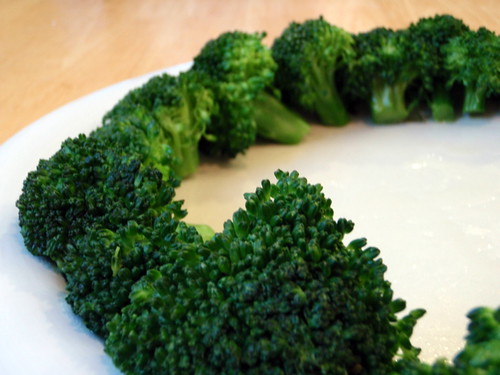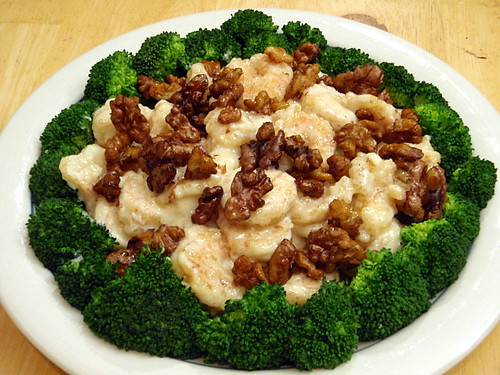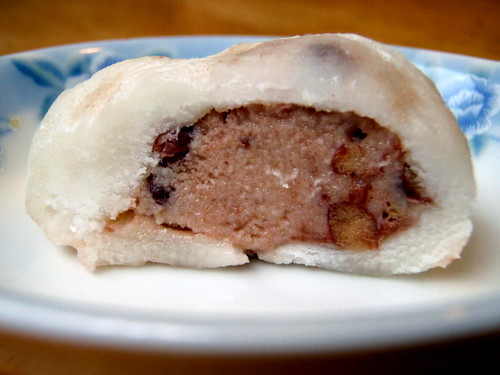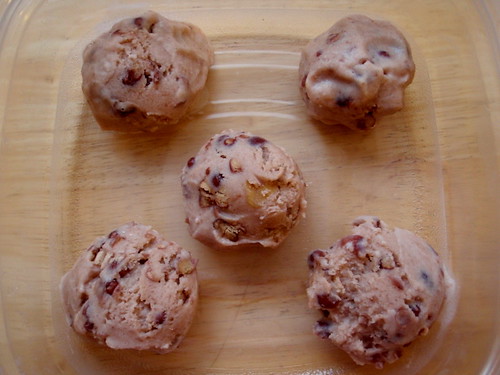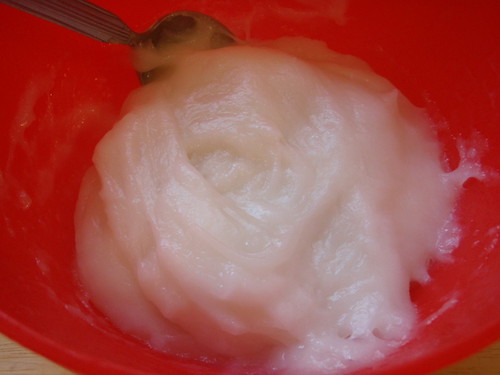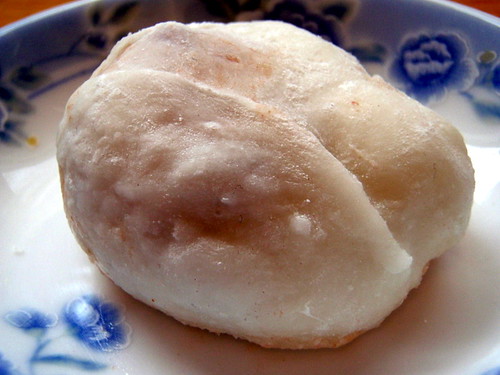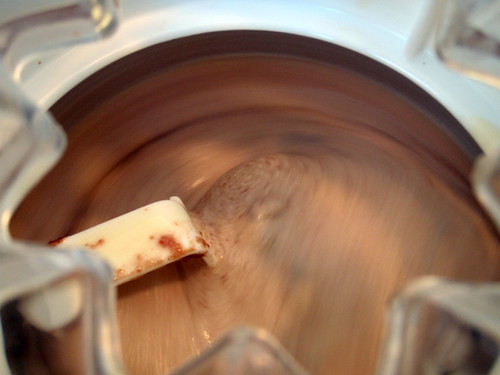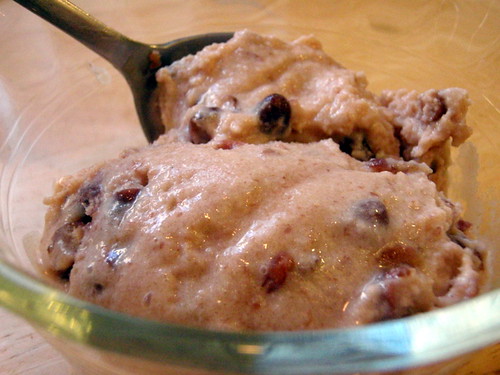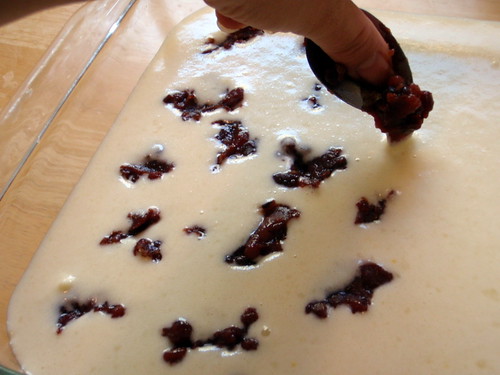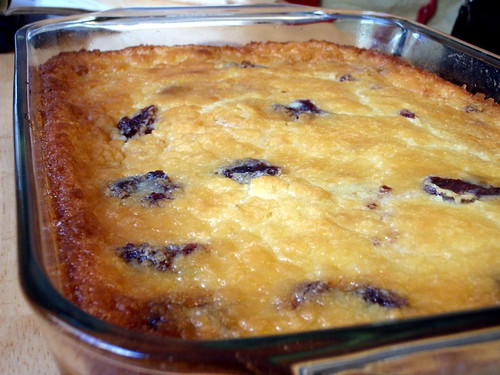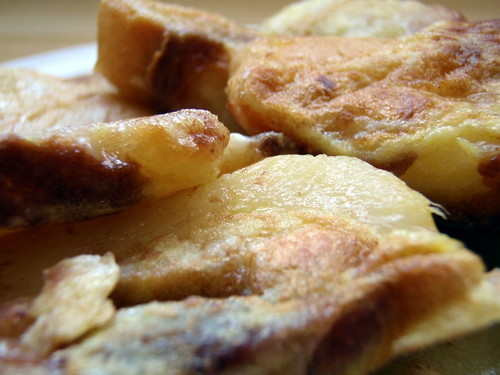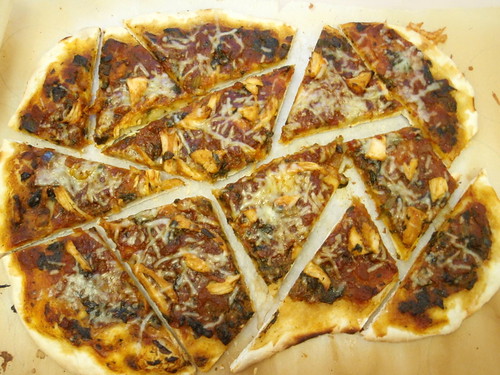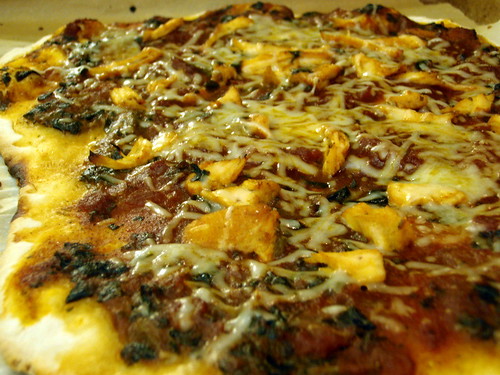Twas the same snowy morning, and two forlorn clementines were staring at me, beseeching me to do something with them other than throw them away. They were already several days past their prime, shriveled and sunken, although not yet spoiling. There must be something I can do with them, I thought. And then I remembered the clementine cake recipe I had noticed on Smitten Kitchen. A flourless cake made with whole clementines, almond flour, sugar, and eggs. Perfect, because I had some leftover almond flour from the macaron experiments that I needed to use up. Alas, two clementines do not a whole cake make. So then I thought, why don't I try cupcakes?
Since it was snowing, and I didn't have any ice in the freezer, I figured I'd try cooling the clementines outside in a snow bath instead of an ice bath. I put a metal bowl out, and an hour and 15 minutes later, it was halfway full of snow.
I plopped the two clementines in there and covered it with more snow and waited half an hour. When I looked back on it, this is what I found.
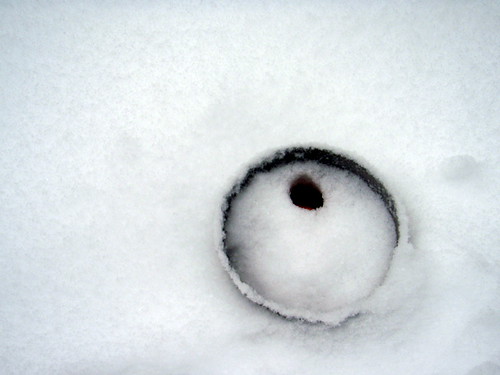
One of the clementines melted its own little chimney!
If you don't happen to make this on a snowy day, go ahead and just use an ice bath or even a cold water bath. The clementines don't need to be chilled, just cool enough to cut in half and not worry about getting boiling clementine juice on your fingers.
If you don't happen to make this on a snowy day, go ahead and just use an ice bath or even a cold water bath. The clementines don't need to be chilled, just cool enough to cut in half and not worry about getting boiling clementine juice on your fingers.
Clementine Cupcakes (adapted from here)
makes 8 cupcakes
2 clementines
2 eggs
1/3 cup sugar
3/4 cup ground almonds
1/3 teaspoon baking powder
Powdered sugar for dusting
makes 8 cupcakes
2 clementines
2 eggs
1/3 cup sugar
3/4 cup ground almonds
1/3 teaspoon baking powder
Powdered sugar for dusting
Put the clementines in a pot with cold water to cover, bring to the boil, and cook for 2 hours.
Drain and, when cool, cut each clementine in half and remove the seeds. Then finely chop the skins, pith, and fruit.
Preheat the oven to 375 °F.
Line a cupcake pan with 8 cupcake liners.
Beat the eggs. Add the sugar, almonds, and baking powder. Mix well, adding the chopped clementines.
Pour the cake mixture into the cupcake liners, about 3/4 full, and bake for 30 minutes, when a skewer will come out clean. Remove from the oven and cool.
Remove the cupcake from the liner, turn upside down, and dust with powdered sugar. Serve at room temperature.
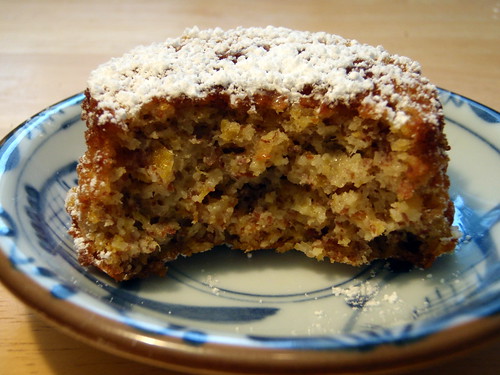
I was a little afraid that the clementines were too old to use, but boiling them in water for two hours really rehydrated them into their young, plump selves. I filled the liners to about 3/4 full but these cupcakes barely rose so you can probably fill them higher if you want. The cupcakes break easily when you remove them from the liner, so you can just dust them while they're still in their liners and serve them that way, but I like the look of the individual mini-cakes.
I like this recipe because you can definitely taste the clementines, but it's not an overly sweet or tart citrus dessert, like say, a lemon bar or key lime pie. If you do want something sweeter and more tart, you can always make a simple glaze with lemon juice and powdered sugar and glaze the cupcake with it. Also, the cupcakes were super moist even without the addition of any oil or butter, which is great if you're worried about that sort of thing. =)
I like this recipe because you can definitely taste the clementines, but it's not an overly sweet or tart citrus dessert, like say, a lemon bar or key lime pie. If you do want something sweeter and more tart, you can always make a simple glaze with lemon juice and powdered sugar and glaze the cupcake with it. Also, the cupcakes were super moist even without the addition of any oil or butter, which is great if you're worried about that sort of thing. =)
